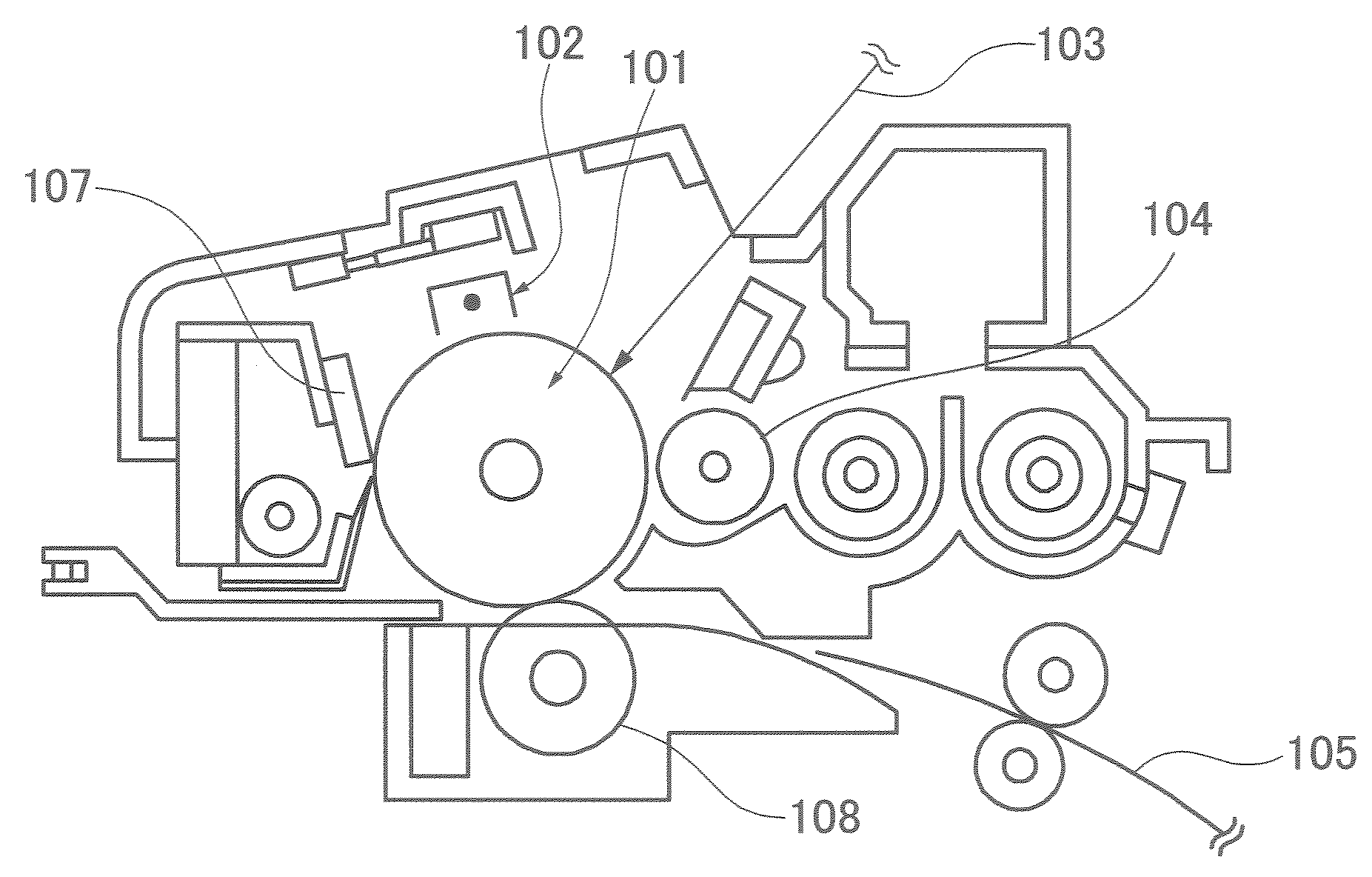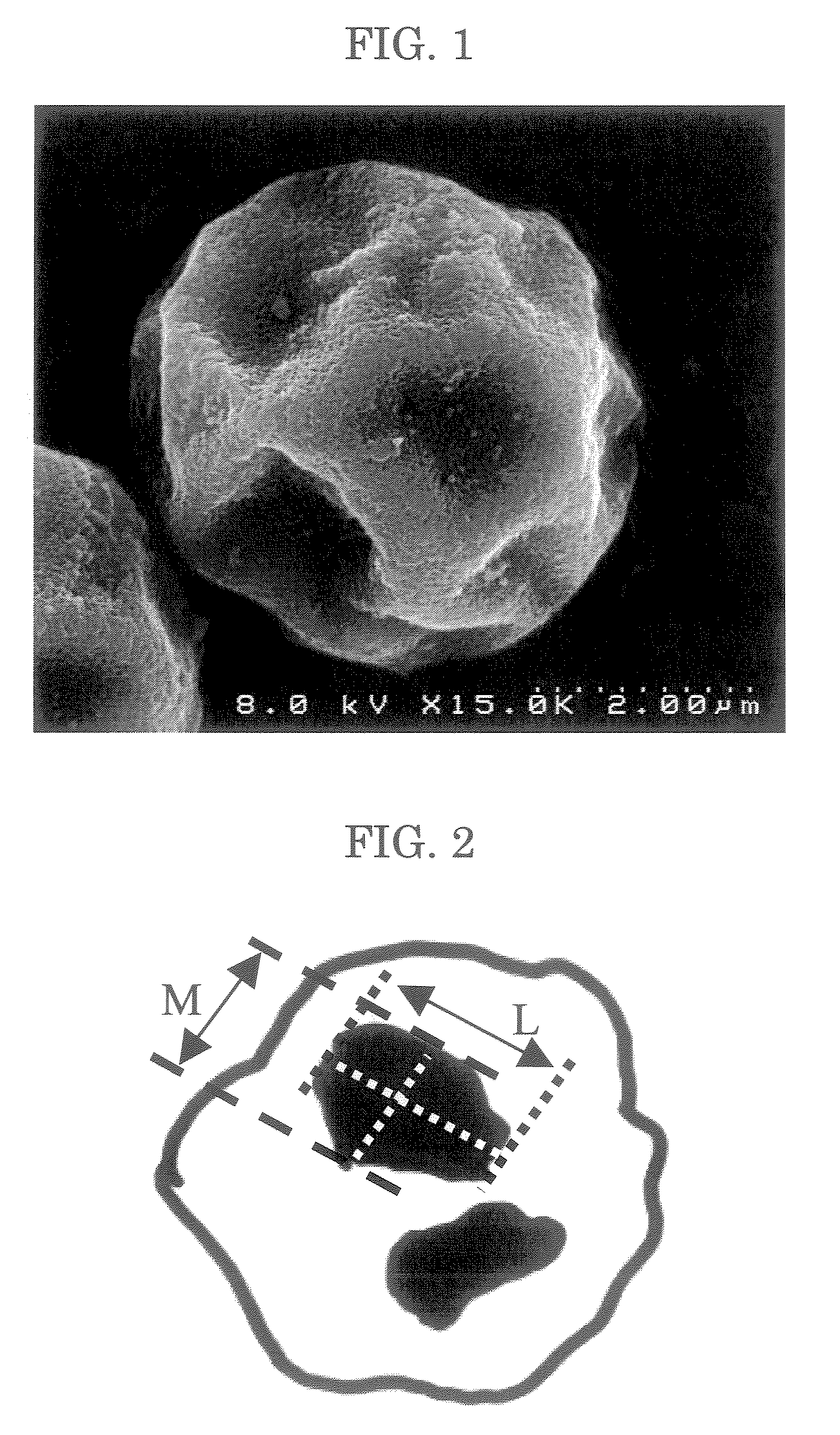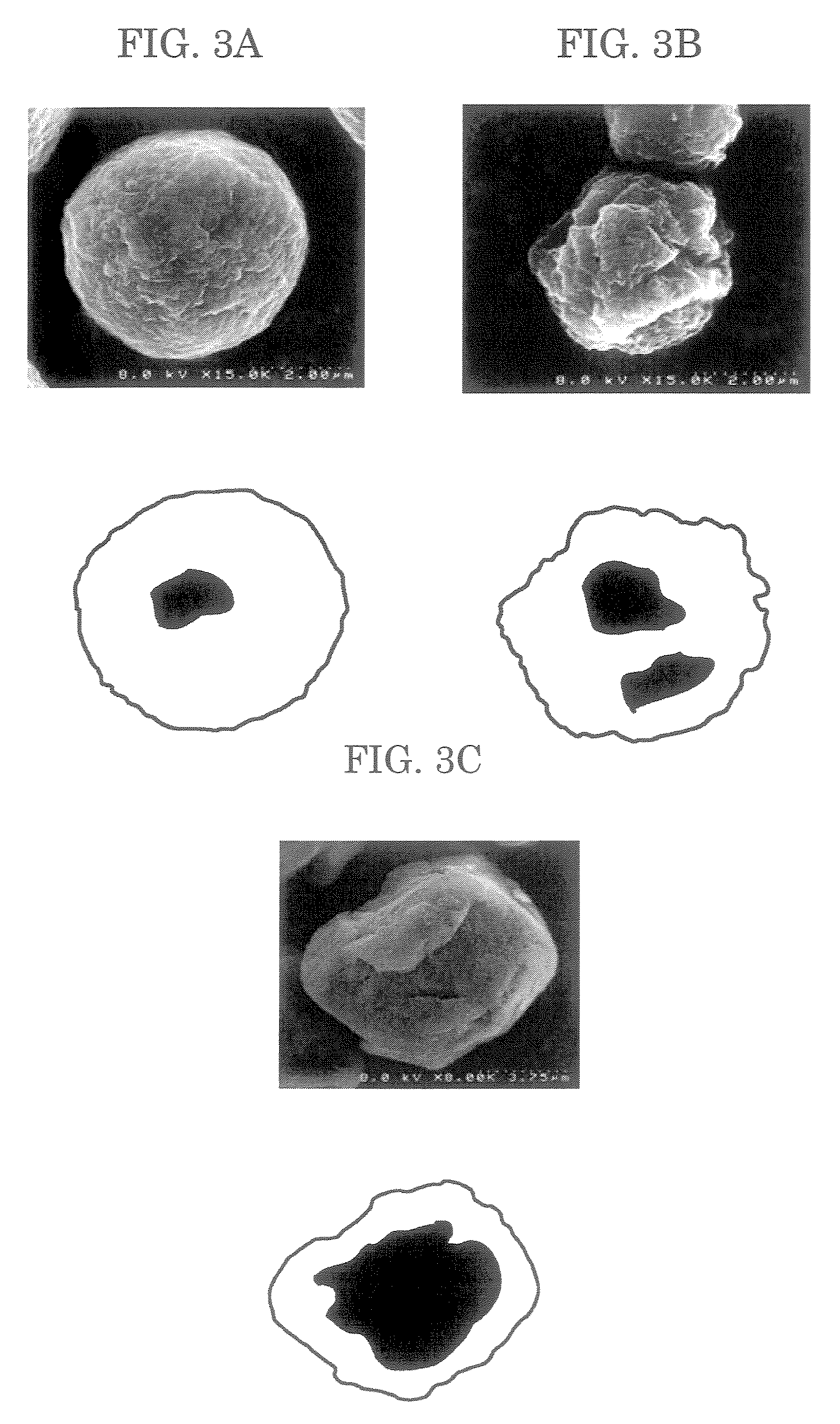Toner and Production Method Thereof, Image Forming Apparatus and Image Forming Method, and Process Cartridge
- Summary
- Abstract
- Description
- Claims
- Application Information
AI Technical Summary
Benefits of technology
Problems solved by technology
Method used
Image
Examples
example a-1
Preparation of Spherical and Hydrophobic Silica
[0245]Tetramethoxysilane and ammonia water were reacted each other at 50° C. to yield a spherical silica according to a sol-gel process. After washing the silica with water, the silica was rinsed with methanol and then dispersed in a toluene without performing drying operations, followed by a hexamethyldisilazane (HMDS) treatment to yield inorganic oxide particles 1. The inorganic oxide particles were stirred in methanol using an ultrasonic dispersing apparatus, and the number average diameter thereof was measured by a laser-diffraction-scattering-particle-size-distribution sizer. The resultant number average diameter of the primary particles was 120 nm.
—Synthesis of Organic Fine Particle Emulsion—
[0246]To a reaction vessel provided with a stirrer and a thermometer, 683 parts by mass of water, 11 parts by mass of sodium salt of the sulfuric acid ester of methacrylic acid ethylene oxide adduct (ELEMINOL RS-30, manufactured by Sanyo Chemi...
example a-2
[0265]A toner was obtained in the same manner as in Example A-1, except that the process from rinsing to mixing of external additives was changed to the process under the following conditions.
—Rinsing—
[0266]After filtering 100 parts by mass of dispersion slurry 1 under reduced pressure,
[0267](1): 100 parts by mass of ion exchange water were added to the filter cake, mixed in a TK homomixer at a rotation speed of 12,000 rpm for 10 minutes and filtered.
[0268](2): 100 parts by mass of 10% by mass sodium hydroxide solution were added to the filter cake of (1), mixed in a TK homomixer at a rotation speed of 12,000 rpm for 30 minutes and filtered under reduced pressure.
[0269](3): 100 parts by mass of 10% by mass hydrochloric acid were added to the filter cake of (2), mixed in a TK homomixer at a rotation speed of 12,000 rpm for 10 minutes and filtered.
[0270](4): 300 parts by mass of iron exchange water were added to the filter cake of (3), mixed in a TK homomixer at a rotation speed of 12...
example a-3
[0274]Toner 3 was obtained in the same manner as in Example A-1, except that the conditions were changed to the following conditions. The thickness of the filler-layer in the toner was 0.02 μm to 0.2 μm.
—Emulsification, Solvent Removal—
[0275]In a vessel, 749 parts by mass of pigment-wax dispersion liquid 1, 115 parts by mass of prepolymer 1, 2.9 parts by mass of ketimine compound 1 and 100 parts by mass (10% by mass, of a filler (Organo Silicasol MEK-ST-UP, the number average particle diameter of the primary particles=12 nm) were placed and mixed at 5,000 rpm for 2 minute by a TK homomixer (manufactured by TOKUSHU KIKA KOGYO CO., LTD.), then 1,200 parts by mass of aqueous phase 1 were added to the vessel and mixed in the TK homomixer at a rotation speed of 13,000 rpm for 10 minutes to obtain emulsion slurry 2.
[0276]Emulsion slurry 2 was placed in a vessel equipped with a stirrer and a thermometer, then the solvent was removed at 30° C. for 6 hours and the product was matured at 45° ...
PUM
| Property | Measurement | Unit |
|---|---|---|
| Fraction | aaaaa | aaaaa |
| Fraction | aaaaa | aaaaa |
| Percent by mass | aaaaa | aaaaa |
Abstract
Description
Claims
Application Information
 Login to View More
Login to View More - R&D
- Intellectual Property
- Life Sciences
- Materials
- Tech Scout
- Unparalleled Data Quality
- Higher Quality Content
- 60% Fewer Hallucinations
Browse by: Latest US Patents, China's latest patents, Technical Efficacy Thesaurus, Application Domain, Technology Topic, Popular Technical Reports.
© 2025 PatSnap. All rights reserved.Legal|Privacy policy|Modern Slavery Act Transparency Statement|Sitemap|About US| Contact US: help@patsnap.com



